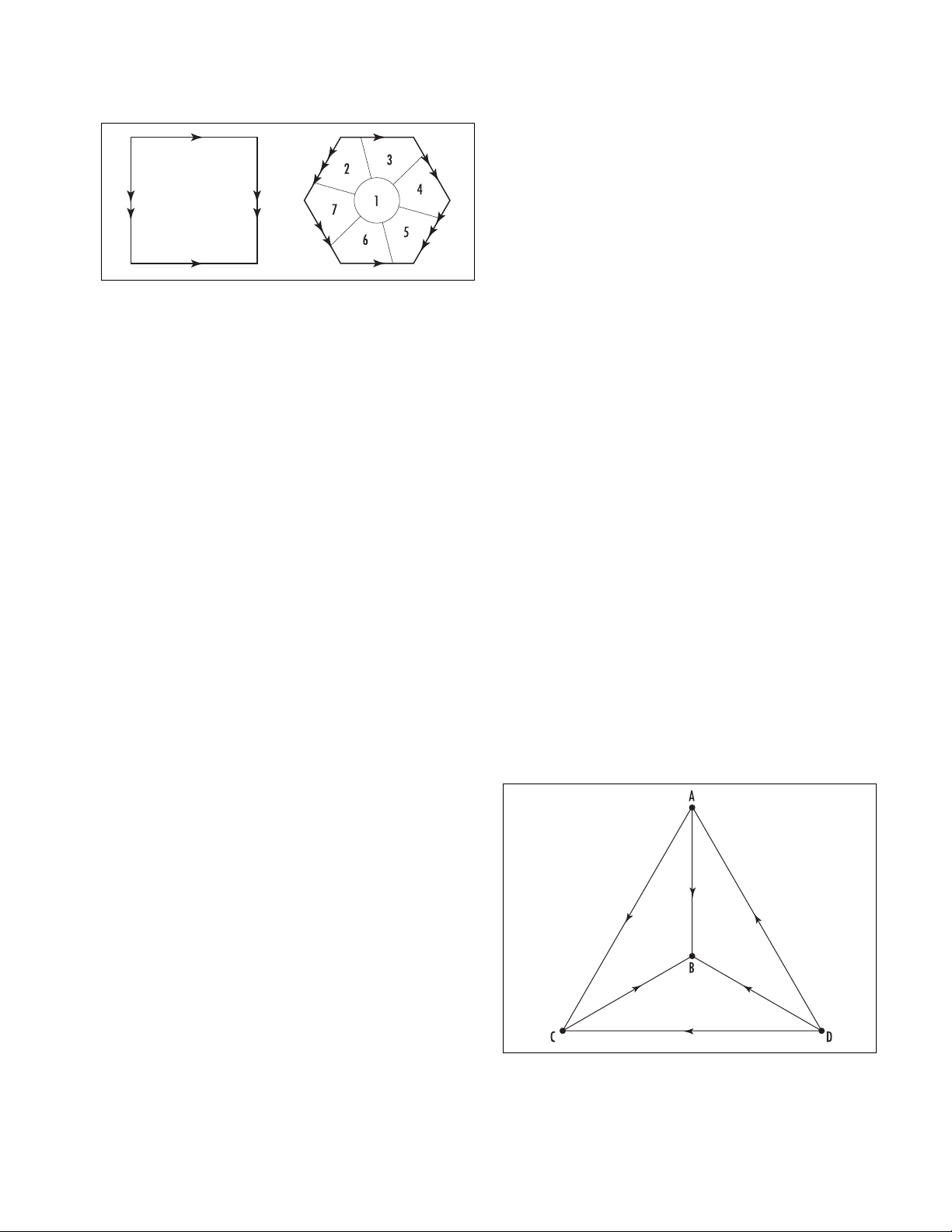
torus can be considered the C
ARTESIAN PRODUCT
of
two circles: each point on a torus corresponds to a pair
of points, one on one circle (the generating circle) and a
second on a second circle (the circle traced out by that
point on the generating circle). The set of all possible
positions of an hour hand and minute hand on a clock,
each corresponding to a full circle of values, describes a
set of outcomes topologically equivalent to a torus.
(Physicists would say that the “phase space” of the two
hands of a clock is a torus.)
One can physically construct a torus by sewing
together the opposite sides of a square rubber sheet as
shown. (One must be sure to align the directions of the
arrows indicated.) Sewing together the opposite sides
of a hexagon also produces a torus.
This latter construct shows that it is possible to
produce a design of seven regions on a torus so that
each regions shares a portion of boundary with each of
the six remaining regions. Thus some maps on a torus
require seven colors to paint if one wishes to ensure
that neighboring regions are always of distinct colors.
Mathematicians have proved that the situation is never
worse than this: seven colors will always suffice to
color a toroidal map, no matter how complicated that
map may be.
Given a punctured torus made of rubber, such as
an inner tube with a small hole, it is physically possible
to stretch open the hole and turn the surface inside out
through that hole. Surprisingly, the resulting surface is
another torus. A double torus is a closed surface with
two holes. Everting a double torus through a puncture
in its surface again yields the same surface back again,
another double torus, and the same result is true of
triple tori and multiple tori with any number of holes.
See also
FOUR
-
COLOR THEOREM
;
SPHERE
.
tournament (round-robin tournament, complete di-
graph) A competition among a collection of teams is
called a tournament if each possible pair of teams
plays exactly one match, and each game played results
in a win for one team and a loss for the other. (That is,
no ties are permitted.) Mathematically, a tournament
among nplayers is a
GRAPH
with nvertices, with edges
drawn between every possible pair of points, directed
with arrows pointing from one vertex to another. Here
each vertex represents a team, and an edge pointing
from vertex Ato vertex Bindicates a win for team A
over team B. The diagram below, for instance, repre-
sents a tournament among four teams, A, B, C, and D.
We see that team Alost to team Dbut beat teams B
and C.
A graph on nvertices with an edge between every
possible pair of vertices directed by an arrow is called a
complete directed graph or simply a complete digraph
on nvertices.
Structurally, there is essentially only one possible
complete digraph on two vertices (although, in terms
of team-playing, there are two possible interpreta-
tions: either a team Abeat a team B, or team Bbeat
team A). For nequal to 3, 4, 5, 6, and 7 there are,
respectively, 2, 4, 12, 56, and 456 different complete
digraphs on nvertices.
Any team that beat every other team in a tourna-
ment is called a source or a transmitter, and any team
that lost to all other teams is called a sink or a receiver.
(These names reflect the alternative interpretation of a
tournament 501
Constructing a torus
Representing a tournament